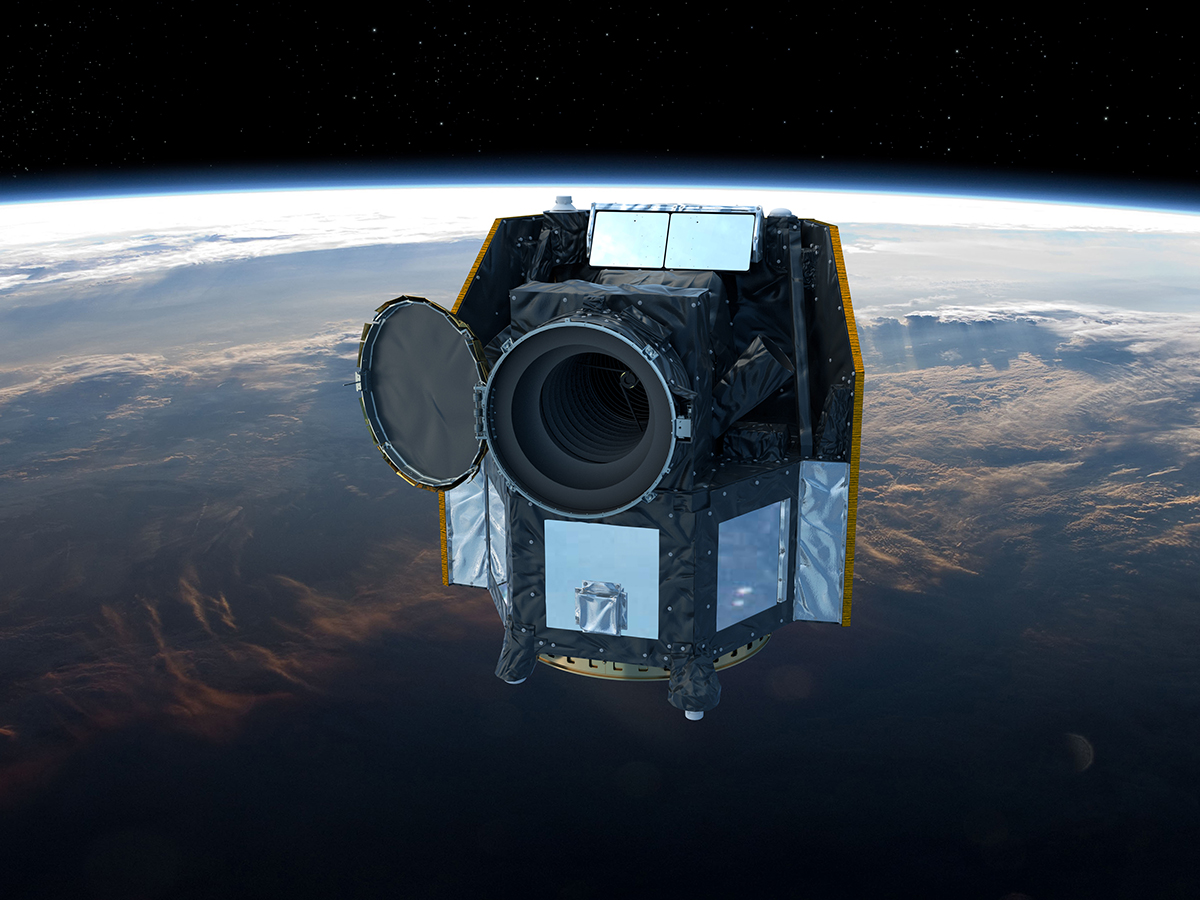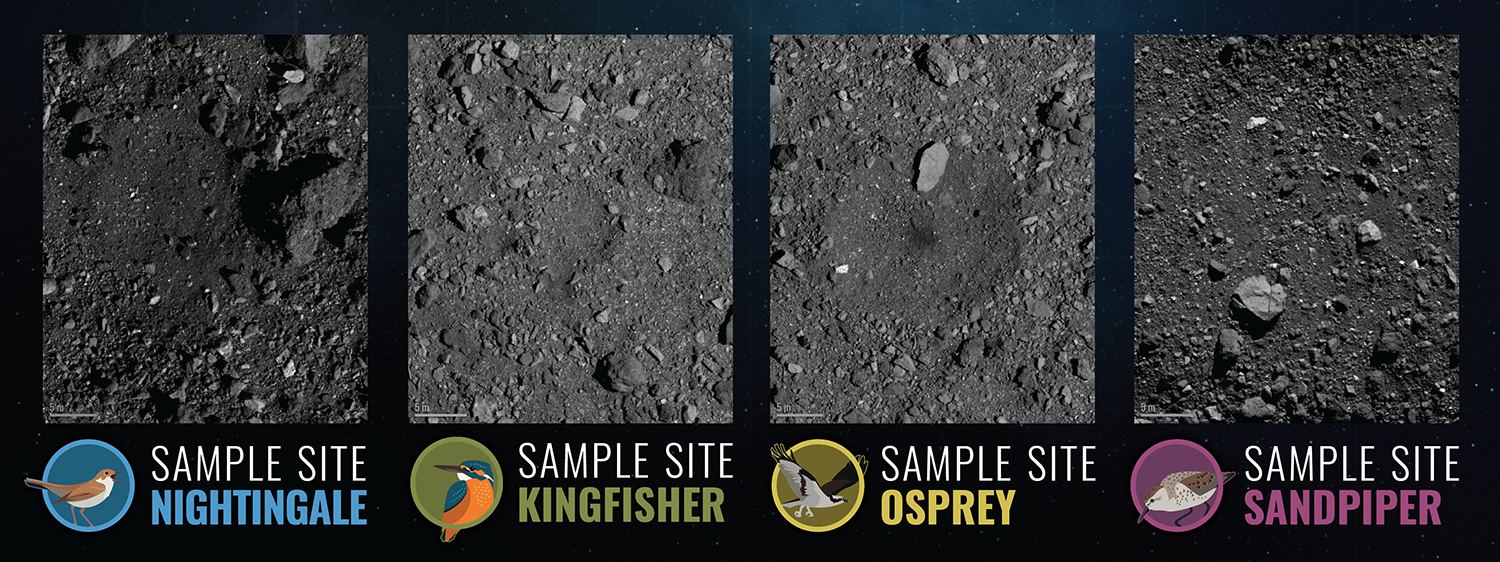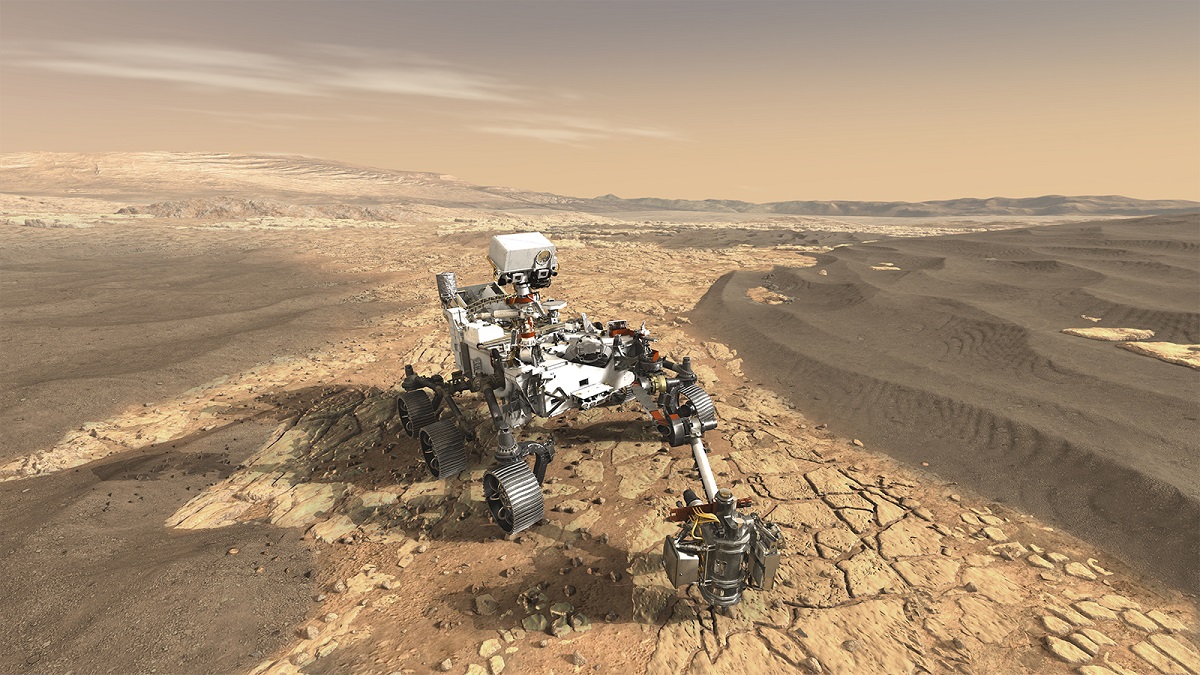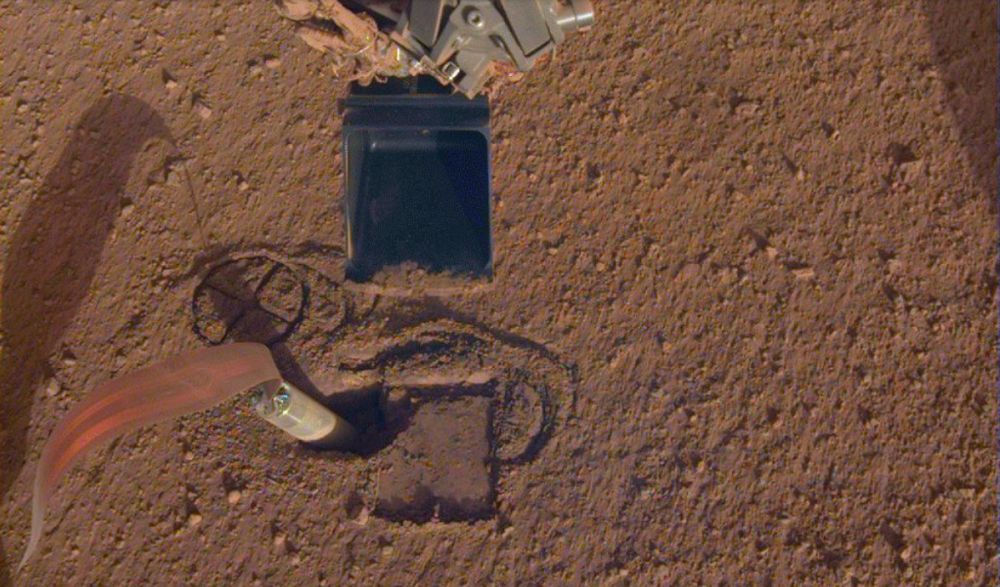The CHEOPS (CHaracterising ExOPlanets Satellite) spacecraft just opened the cover on its telescope. The spacecraft was launched on December 18th 2019 and has so far performed flawlessly. In one or two weeks we could get our first images from the instrument.
Continue reading “CHEOPS Just Opened Its Eyes to Start Studying Known Exoplanets, We Should See the First Picture in a Few Weeks”It’s Time to Decide. Where Should OSIRIS-REx Take a Sample from Bennu?
NASA’s OSIRIS-REx arrived at asteroid Bennu in December 2018. During the past year, it’s been imaging the surface of the asteroid extensively, looking for a spot to take a sample from. Though the spacecraft has multiple science objectives, and a suite of instruments to meet them, the sample return is the key objective.
Now, NASA has narrowed the choice down to four potential sampling locations on the surface of the asteroid.
Continue reading “It’s Time to Decide. Where Should OSIRIS-REx Take a Sample from Bennu?”It’s Time for Hayabusa-2 to Come Home
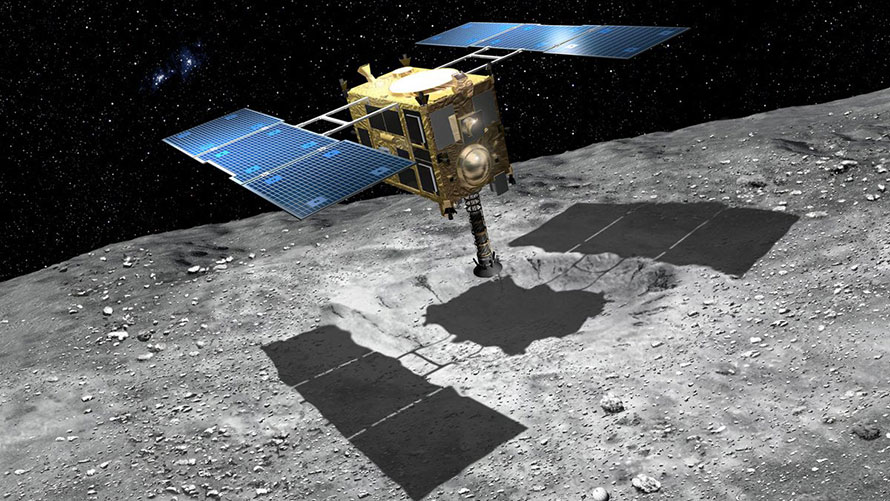
Japan’s Hayabusa 2 spacecraft is on its way home. The asteroid-visiting, sample-return mission departed asteroid Ryugu (162173 Ryugu) on Wednesday, beginning its year-long journey back to Earth. And it’s carrying some precious cargo.
Continue reading “It’s Time for Hayabusa-2 to Come Home”A NASA Panel Says We Don’t Need to be so Careful About Infecting Other Worlds
It’s time to update the rules. That’s the conclusion of a panel that examined NASA’s rules for planetary protection. It was smart, at the dawn of the space age, to think about how we might inadvertently pollute other worlds with Earthly microbes as we explore the Solar System. But now that we know a lot more than we did back then, the rules don’t fit.
Continue reading “A NASA Panel Says We Don’t Need to be so Careful About Infecting Other Worlds”Here’s NASA’s New Plan to Get InSight’s Temperature Probe Into Mars
The mole is still stuck.
The mole is the name given to the Heat Flow and Physical Properties Package (HP3) instrument on NASA’s Mars InSight lander. It’s job is to penetrate into the Martian surface to a depth of 5 meters (16 ft) to measure how heat flows from the planet’s interior to the surface. It’s part of InSight’s mission to understand the interior structure of Mars, and how it formed.
But it’s stuck at about 35 centimers (14 inches.) The mole can do science shy of its maximum depth of 5 meters, but not this shallow. And NASA, and the DLR (German Aerospace Center) who provided the mole, have a new plan to fix it.
Continue reading “Here’s NASA’s New Plan to Get InSight’s Temperature Probe Into Mars”Even Though it Hasn’t Launched Yet, JUICE Took its First Images of Jupiter and its Moons

Is there a more complicated and sophisticated technological engineering project than a spacecraft? Maybe a particle accelerator or a fusion power project. But other than those two, the answer is probably no.
Spacecraft like the ESA’s JUICE don’t just pop out of the lab ready to go. Each spacecraft like JUICE is a singular design, and they require years—or even a decade or more—of work before they ever see a launch pad. With a scheduled launch date of 2022, JUICE is in the middle of all that work. Now its cameras are capturing images of Jupiter and its icy moons as part of its navigation calibration and fine-tuning.
“It felt particularly meaningful to conduct our tests already on our destination!”
Gregory Jonniaux, Vision-Based Navigation expert at Airbus Defence and Space.
Hardy Tardigrades on Board Israel’s Beresheet Lander Probably Survived the Crash

When SpaceIL’s Beresheet lander crashed into the Moon, it was a bitter-sweet moment for Israel’s space exploration aspirations. The privately-built spacecraft was punching above its weight class by proceeding on its journey to the Moon. Unfortunately, it crashed, ending the dream.
But Beresheet carried some unusual passengers, as part of an unusual, yet visionary, sub-mission: tardigrades.
Continue reading “Hardy Tardigrades on Board Israel’s Beresheet Lander Probably Survived the Crash”It’s Decided, the Mars 2020 Rover Will Land in Jezero Crater

Jezero crater is the landing spot for NASA’s upcoming 2020 rover. The crater is a rich geological site, and the 45 km wide (28 mile) impact crater contains at least five different types of rock that the rover will sample. Some of the landform features in the crater are 3.6 billion years old, making the site an ideal place to look for signs of ancient habitability.
Continue reading “It’s Decided, the Mars 2020 Rover Will Land in Jezero Crater”
How Mission Delays Hurt Young Astronomers
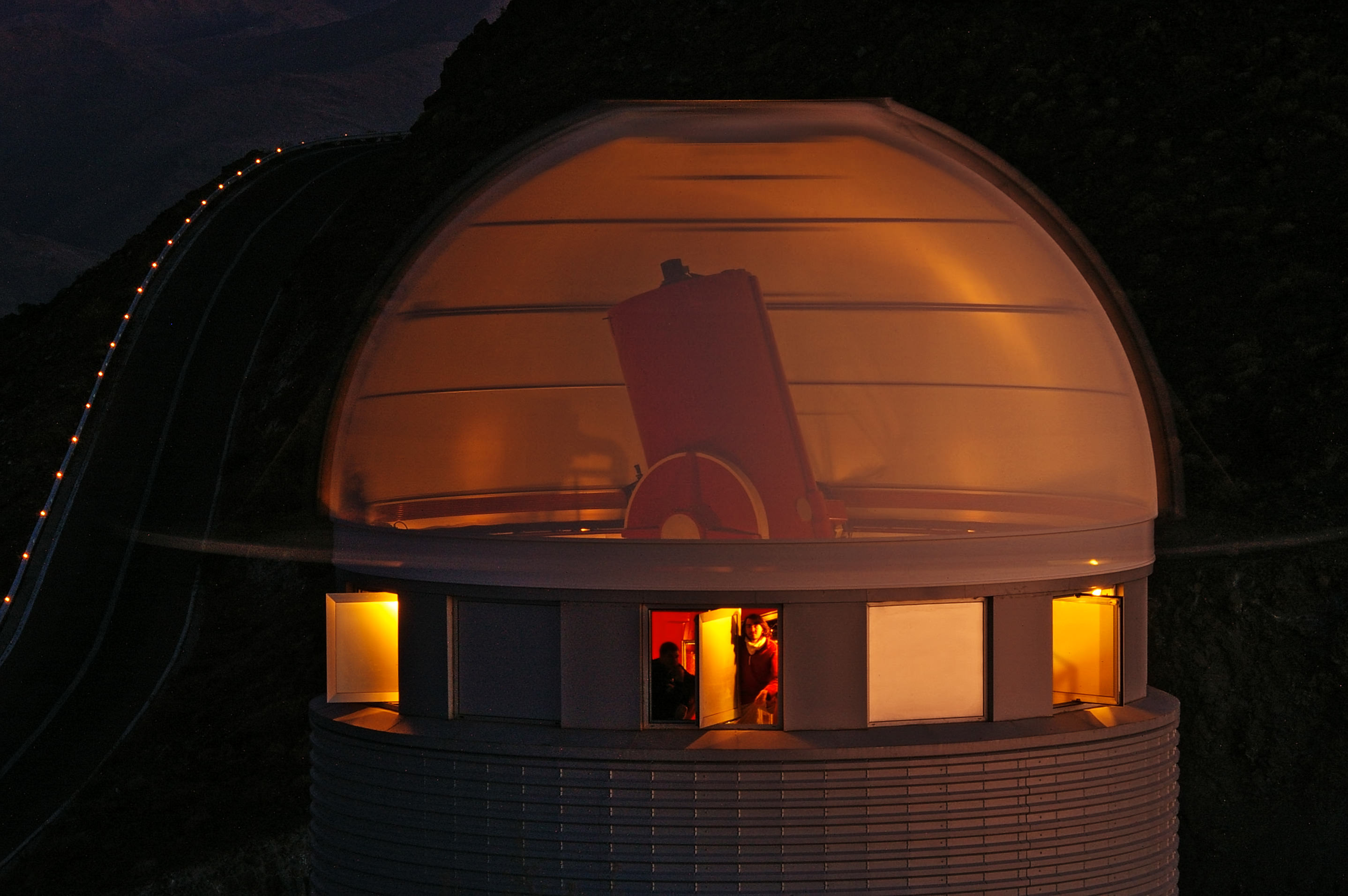
Back in Ye Olden Times, the job of astronomer was a pretty exclusive club. Either you needed to be so rich and so bored that you could design, build, and operate your own private observatory, or you needed to have a rich and bored friend who could finance your cosmic curiosity for you. By contrast, today’s modern observatories are much more democratic, offering of a wealth of juicy scientific info for researchers across the globe. But that ease of access comes with its own price: you don’t get the instrument all to yourself, and that’s a challenge for young scientists and their research.
Continue reading “How Mission Delays Hurt Young Astronomers”
Musk Says that SpaceX will use a Giant Party Balloon to Bring an Upper Stage Back. Wait, what?
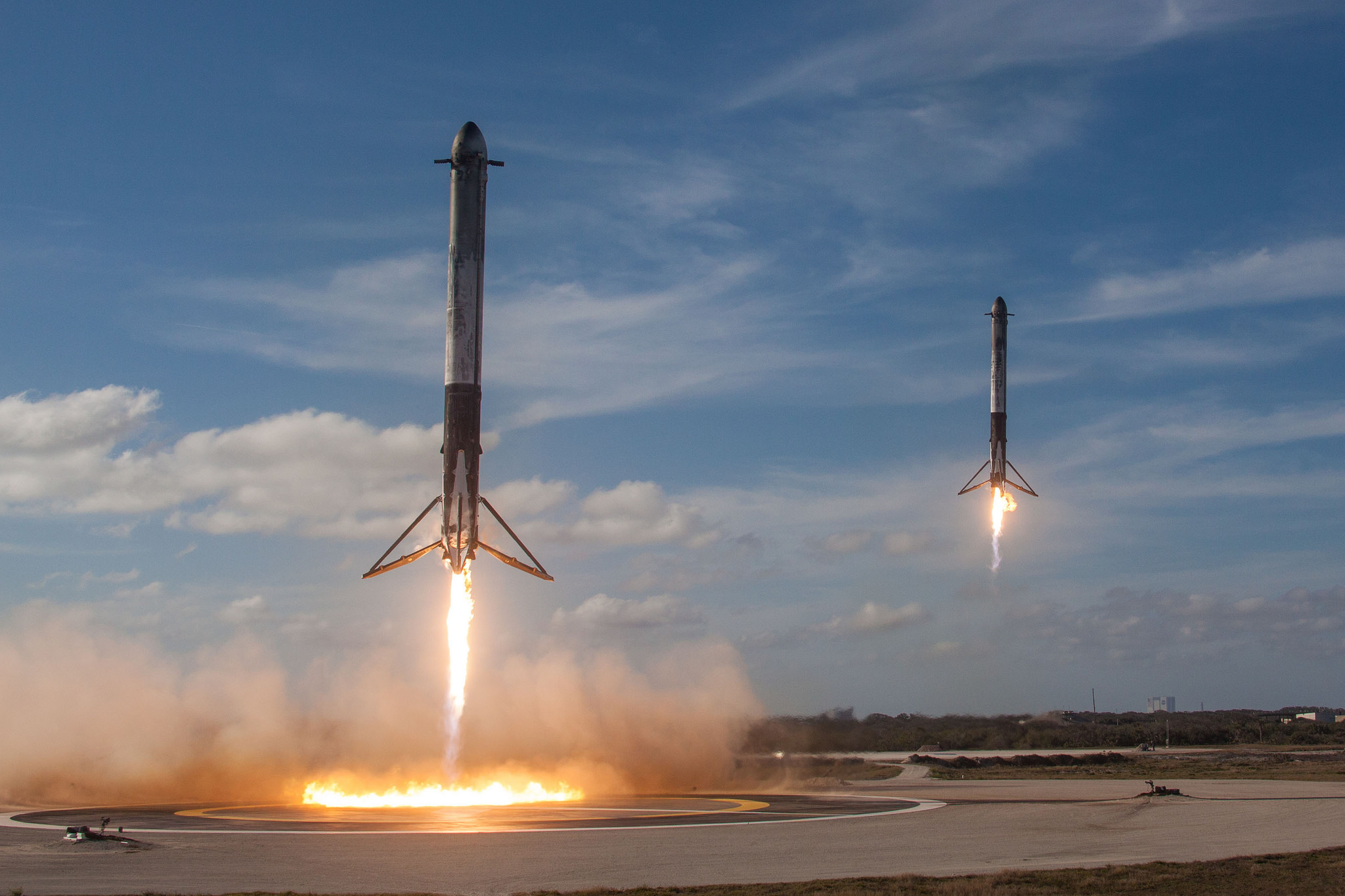
When Elon Musk of SpaceX tweets something interesting, it generates a wave of excitement. So when he tweeted recently that SpaceX might be working on a way to retrieve upper stages of their rockets, it set off a chain of intrigued responses.
SpaceX will try to bring rocket upper stage back from orbital velocity using a giant party balloon
— Elon Musk (@elonmusk) April 15, 2018
SpaceX has been retrieving and reusing their lower stages for some time now, and it’s lowered the cost of launching payloads into space. But this is the first hint that they may try to do the same with upper stages.
Twitter responders wanted to know exactly what SpaceX has in mind, and what a “giant party balloon” might be. Musk hasn’t elaborated yet, but one of his Twitter followers had something interesting to add.
Quinn Kupec, a student at the University of Maryland’s James Clark School of Engineering tweeted to Musk:
If you're proposing what I think you are, an ultra low ballistic entry coefficient decelerator, then you and @SpaceX should come see what we have at the @UofMaryland . We've been working on this for awhile and just finished some testing pic.twitter.com/nJBvyUnzaK
— Quinn Kupec (@QuinnKupec) April 16, 2018
Universe Today contacted Mr. Kupec to see if he could help us understand what Musk may have been getting at. But first, a little background.
An “ultra low ballistic entry coefficient decelerator” is a bit of a mouthful. The ballistic coefficient measures how well a vehicle can overcome air resistance in flight. A high ballistic coefficient means a re-entry vehicle would not lose velocity quickly, and would reach Earth at high speeds. An ultra low ballistic entry coefficient decelerator would lose speed quickly, meaning that a vehicle would be travelling at low, subsonic speeds before reaching the ground.
To recover an upper stage booster, low speeds are desirable, since they generate less heat. But according to Kupec, there’s another problem that must be overcome.
“What happens when these things slow down to landing velocities? If your center of gravity is offset significantly behind your center of drag, as would be the case with a returning upper stage, it can get unstable. If the center of gravity of the re-entry vehicle is too high, it can become inverted, which is obviously not desirable.”
So the trick is to lower the speed of the re-entry vehicle to the point where the heat generated by reentry isn’t damaging the booster, and to do it without causing the vehicle to invert or otherwise become unstable. This isn’t a problem for the main stage boosters that SpaceX now routinely recovers; they have their own retro-rockets to guide their descent and landing. But for the upper stage boosters, which reach orbital velocities, it’s an obstacle that has to be overcome.
“My research is specifically focused on how high you can push the center of gravity and still maintain the proper flight configuration,” said Kupec.
But what about the “giant party balloon” that Musk tweeted about?
Musk could be referring, in colorful terms, to what’s called a ballute. The word is a combination of the words balloon and parachute. They were invented in the 1950’s by Goodyear Aerospace. They can arrest the descent of entry vehicles and provide stability during the descent.
“…the balloon would have to be 120 ft. in diameter, and made of a high-temperature fabric…” – Professor Dave Akin, University of Maryland
Universe Today contacted Professor Dave Akin of the University of Maryland for some insight into Musk’s tweet. Professor Akin has been working on reentry systems for over 2 decades.
In an e-mail exchange, Professor Akin told us, “There have been concepts proposed for deploying a large balloon on a cable that is towed behind you on entry. The balloon lowers your ballistic coefficient, which means you decelerate higher in the atmosphere and the heat load is less.” So the key is to scrub your speed before you get closer to Earth, where the atmosphere is thicker and generates more heat.
But according to Professor Akin, this won’t necessarily be easy to do. “To get the two orders of magnitude reduction in ballistic coefficient that Elon has been talking about the balloon would have to be 120 ft. in diameter, and made of a high-temperature fabric, so it’s not going to be all that easy.”
But Musk’s track record shows he doesn’t shy away from things that aren’t easy.
Retrieving upper rocket stages isn’t all about lowering launch costs, it’s also about space junk. The European Space Agency estimates that there are over 29,000 pieces of space junk orbiting Earth, and some of that junk is spent upper stage boosters. There have been some collisions and accidents already, with some satellites being pushed into different orbits. In 2009, the Iridium 33 communications satellite and the defunct Russian Cosmos 2251 communications satellite collided with each other, destroying both. If SpaceX can develop a way to retrieve its upper stage boosters, that means less space junk, and fewer potential collisions.
There’s a clear precedent for using balloons to manage reentry. With people like Professor Akin and Quinn Kupec working on it, SpaceX won’t have to reinvent the wheel. But they’ll still have a lot of work to do.
Musk tweeted one other thing shortly after his “giant party balloon” tweet:
And then land on a bouncy house
— Elon Musk (@elonmusk) April 16, 2018
No word yet on what that might mean.
Elon Musk’s “giant party balloon” tweet: https://twitter.com/elonmusk/status/985655249745592320
Quinn Kupec’s tweet: https://twitter.com/QuinnKupec/status/985736260827471872

